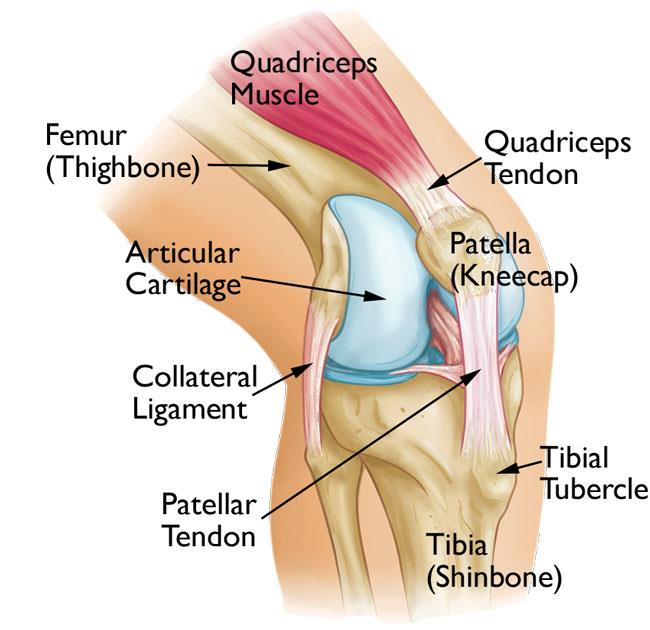Patellofemoral Pain Syndrome: Sports Chiropractor Discusses Causes, Symptoms & Treatment. Speak To A Therapist Today. Call (24/7): 1300-003-777.
Patellofemoral pain syndrome is an extremely common clinical condition which we our practitioners encounter at Vitality Chiropractic Australia. It’s one of the more common knee complaints in both young individuals, sports people and the elderly. Patellofemoral pain syndrome is the diagnostic term that is given to describe generalized pain that is felt behind your patella. The patella is the bone that articulates with the femur and tibia of the leg. The complaint is usually the result of poor knee joint alignment or function that contributes to pain and discomfort during particular activities.
Causes Of Patellofemoral Pain
During normal circumstances that patella glides smoothly up and down through the femoral groove. During knee flexion and abnormal patella alignment the pressure beneath the patella increases. This pressure contributes to the development of patellofemoral pain syndrome. Repeated trauma to the knee and patella may irritate the retropatella space. Repetitive type overuse activities may cause repeated irritation of the same space and lead to knee joint degeneration or arthritis. The most common causes of patellofemoral pain syndrome include:
- Patella misalignment due to abnormal muscle asymmetry.
- The quadricep muscle originates at the hip and attaches to the patella at the knee joint.
- There may be an imbalance between the vastus lateralis (VL) quadricep muscle which is situated on the outside of the thigh compared to the vastus medialis (VM) on the inside of the thigh.
- This imbalance pulls the patella laterally so that it glides abnormally within the femoral groove.
- Muscle imbalance may be the result of incorrect training or limited flexibility.
- Poor kinetic chain (hip, knee, foot) biomechanics and control.
- Repetitive actions or sports such as running, tennis, netball, football, volleyball and basketball are major contributing factors.
Symptoms Of Patellofemoral Tracking Syndrome
Sufferers of patellofemoral pains syndrome usually report a gradual onset of knee pain that worsens over a period of time. It may progress to the point where it significantly influences your ability to complete activities of daily living and sports related activities. It is at this point that many people seek Chiropractic management for their knee pain. Other symptoms you may be experiencing include:
- Pain that is worsen during weight bearing exercise or activity.
- Pain that worsens during knee bending.
- Activities may include walking down stairs, squatting, kneeling, hopping and running.
- A clicking or grinding sensation may be noted behind the patella.
Effective Physical Therapy Treatment Strategies
Research has demonstrated that physical therapy such as Chiropractic and Physiotherapy are very effective at assisting people suffering from patellofemoral pain syndrome as well as other knee conditions. It’s estimated that nearly nine out of ten cases will be pain free or notice significant improvement following six weeks of treatment. Aims of management are included below:
- Initial anti-inflammatory measures, protection from further injury and acute pain relief strategies.
- Mobilisation and knee joint stretching to regain complete range of motion and movement.
- Soft tissue therapy and home exercise advice to reduce muscle tightness.
- Exercise advice and prescription to improve quadricep and associated muscle balance.
- Assessment of lower limb kinetic chain to observe for presence of abnormalities.
Chiropractor Patellofemoral Pain Syndrome Research
- There appears to be a consistent improvement in individuals suffering from patellofemoral pain syndrome following conservative manual therapy treatment. Crossley, K. (2001). A systematic review of physical interventions for patellofemoral pain syndrome. Clinical Journal of Sports Medicine, 11(2); 103 – 110.
-
Exercise prescription to target quadricep muscle balance has been demonstrated to result in positive clinical outcomes. Cowan, S. (2002). Physical therapy alters recruitment of the vasti in patellofemoral pain syndrome. Medicine & Science in Sports & Exercise, 34(12); 1879 – 1885.
Additional Information
If you wish to continue your reading about Patellofemoral pain syndrome please click here.

